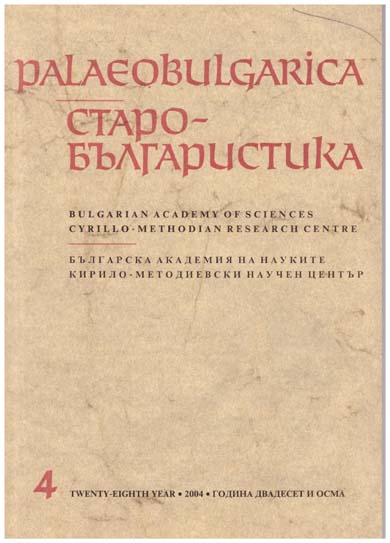Светият Убрус в средновековните паметници по българските земи
The Shroud of Christ in Medieval Paintings in Bulgaria
Author(s): Nona PetkovaSubject(s): Visual Arts, Middle Ages
Published by: Кирило-Методиевски научен център при Българска академия на науките
Summary/Abstract: The article presents the medieval images of the Shroud of Christ (Mandylion) that are preserved in Bulgaria. These early examples of the Mandylion have rarely been reproduced and they are not well known in the scholarly literature on the topic. This survey is the first step towards a more elaborate study and it examines nine representations, one of them being the famous icon of the Shroud of Laon (13th c.). As a result of the research it was found that on Bulgarian territory it is the archaic version of the representation of the Shroud of Christ as a cloth without folds that is more widespread. This version is represented by the following paintings: the Ossuary of Bachkovo Monastery (12th c.), the second painted layer of St. Georges church in Sofia (12th c.), the cemetery church of the town of Rila (11th–12th c.), the chapel at Gospodev dol (13th c.) and the church of Boyana (1259). The second version, also known as palaeologuian, is represented by two paintings only – the mural paintings of Hrelyos Tower (14th c.) and those of Zemen monastery (14th c.). In Bulgaria there are also ingenious iconographic solutions like the idiosyncratic transitional version of the Shroud of Christ from St. Peters church in the village of Berende (14th c.) and the unique image of the Mandylion from the cemetery church of the town of Rila. An interpretation of the latter is offered for the first time in the article.
Journal: PALAEOBULGARICA / СТАРОБЪЛГАРИСТИКА
- Issue Year: 2004
- Issue No: 4
- Page Range: 19-42
- Page Count: 24
- Language: Bulgarian
- Content File-PDF

